You'll transform your hunting experience by mastering smoke preservation – an ancient technique that's more relevant than ever. Smoking not only preserves your game meat longer but also breaks down tough tissues for enhanced tenderness while adding rich, complex flavors. It's a healthier preparation method that requires less added fat and creates natural barriers against bacteria. Modern equipment makes it easier than traditional methods, while still honoring time-tested preservation principles. Whether you're storing meat for winter or creating gourmet wild game dishes, smoke preservation skills will elevate your hunting journey from field to table. There's so much more to discover about this rewarding craft.
The Ancient Art Lives On
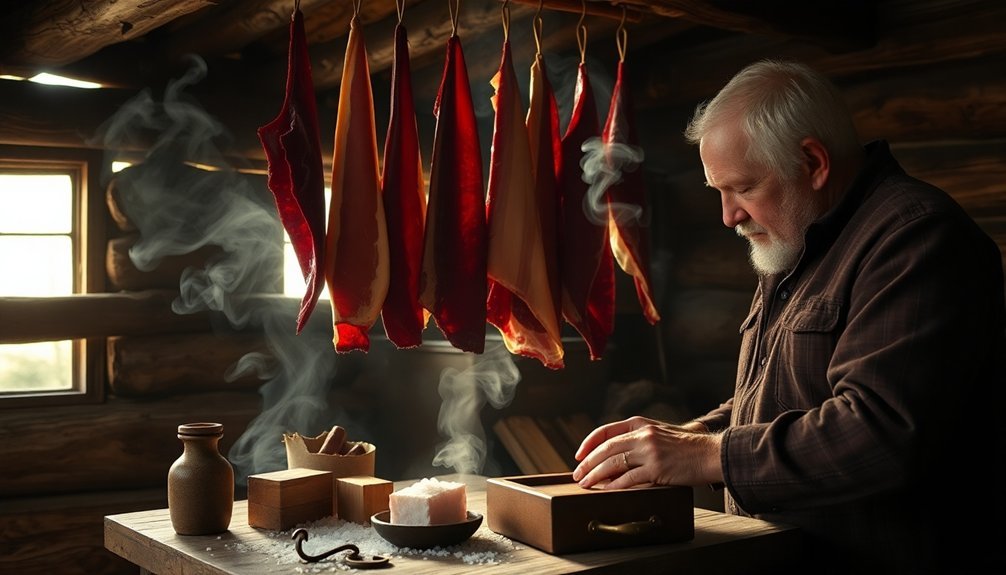
Smoke preservation connects us to our ancestors through a timeless practice that's been used for thousands of years. When you smoke your game meat today, you're participating in a tradition that ancient cultures discovered was vital for survival, as they found that smoke-exposed foods lasted considerably longer before spoiling.
You'll find this technique particularly relevant if you live in regions like Alaska, Canada, or Northern Europe, where smoking remains an essential part of food preservation. The Native Americans of the Great Lakes region preserved their meat in birchbark containers after smoking to ensure lasting sustenance throughout the seasons. Just as your predecessors did, you can use dedicated smoke houses or adapted spaces to preserve your harvest, especially during autumn when game is plentiful.
Like the medieval Europeans who preserved their pork in smoke houses, you'll need to master the careful balance of maintaining smoke without flames. You'll want to position your meat high above the embers, using ashes to control the environment.
The process not only preserves your game but also imparts unique flavors depending on your choice of wood. When you combine smoking with other preservation methods like drying or curing, you're ensuring your harvest stays viable throughout the year, just as our ancestors did.
Modern Benefits of Smoke Preservation
While our ancestors primarily used smoking for preservation, today's hunters benefit from this technique in multiple ways.
The tradition dates back to prehistoric times when early humans first discovered this preservation method.
You'll discover that smoking not only preserves your game meat but also transforms it into a gourmet experience with rich, complex flavors that you can't achieve through other cooking methods. By choosing different woods like oak, hickory, or mesquite, you can create distinct flavor profiles that enhance your wild game.
You'll appreciate how smoking breaks down tough connective tissues, making even challenging cuts like venison shoulder incredibly tender. The slow cooking process at temperatures above 160°F, combined with controlled humidity in your smoker, guarantees your meat stays juicy while becoming fall-apart tender.
Additionally, you're using a healthier cooking method, as smoking requires less added fat and reduces the formation of harmful compounds compared to high-heat grilling.
The preservation benefits remain relevant even with modern refrigeration. The combination of smoke's antimicrobial compounds and the drying effect creates a natural barrier against bacteria.
When you combine smoking with salt curing, you'll extend your game meat's shelf life while developing deeper, more complex flavors.
Selecting Your Smoking Woods

When smoking game meat, you'll need to match your wood choice to the type and size of meat you're preserving.
For larger cuts of venison or wild boar, start with oak or hickory as your base smoking wood, as these hardwoods provide a robust flavor that stands up to gamey meats. The slow cooking process helps break down tough connective tissues while retaining moisture in the meat.
You can fine-tune your smoke profile by adding fruit woods like apple or cherry, which contribute subtle sweetness and help balance the stronger flavors of wild game.
Wood Pairs For Game
The right wood choice can make or break your smoked game meat's flavor profile. If you're looking for a bold, universal option, hickory is your safest bet. It'll complement your game meat's natural flavors while adding a robust smokiness that works particularly well with tougher cuts.
You can enhance the process by adding beer, bourbon, or your preferred juice to the mix.
For a lighter touch, consider apple wood. While it's typically associated with poultry and fish, its mild, sweet smoke works surprisingly well with game meats that shouldn't be overpowered.
If you're smoking duck, apple wood's subtle fruity notes will perfectly balance the meat's natural richness.
Pecan offers a middle ground with its sweet, nutty profile that's versatile enough for most game meats. It'll enhance your meat's natural flavors without dominating them.
For something more adventurous, try juniper wood – but use it sparingly. Its intense, resinous flavor can quickly overpower your meat if you're not careful.
You'll want to stick to water as your liquid when using juniper, as its strong profile doesn't need additional flavor enhancement.
Best Smoking Wood Basics
Selecting the right smoking wood boils down to understanding three key factors: wood type, form, and intensity.
You'll want to stick with hardwoods, as softwoods like pine and cedar can release harmful resins and create dangerous, sooty smoke.
For game meats, you've got several excellent options. Mesquite's intense, earthy flavor works perfectly with venison and other large game cuts, while oak's medium intensity provides a clean, steady burn that won't overpower your meat.
If you're smoking smaller game or want a milder flavor, consider alder or maple for their subtle, sweet profiles.
You'll need to choose the right wood form for your setup. If you're using a traditional smoker, logs or chunks are your best bet – they'll burn longer and provide consistent smoke.
For shorter smokes or when you need to add quick flavor, chips work well. Always use seasoned wood, as green wood can create bitter smoke and uneven burning.
Don't overdo it with smoke intensity. Start with one chunk of medium-intensity wood like hickory or oak, then adjust based on your results.
You can always combine woods to create your perfect flavor profile.
Essential Equipment for Game Smoking
You'll need to choose between charcoal, gas, electric, or pellet smokers for your game smoking setup, with each offering different levels of temperature control and smoke production.
Your success depends heavily on reliable temperature monitoring tools, including both chamber and meat thermometers that can track the cooking process from start to finish.
Quality smoking woods must be properly stored in a dry location and selected based on their compatibility with different game meats, whether you're using chunks, chips, or pellets.
Basic Smoker Styles Compared
Modern hunters seeking to preserve their game have four main smoker styles to choose from, each with distinct advantages for different smoking needs.
Pellet smokers offer the most convenient option with digital controls and versatile temperature ranges from 160-500°F, making them ideal if you're new to smoking game meat.
Gas smokers provide similar convenience but require adding wood chips for smoke flavor, while maintaining steady temperatures through built-in vents and dampers.
For traditionalists, charcoal smokers deliver superior smoke flavor and a more hands-on experience. Though they demand more attention and skill, they're excellent for learning temperature control and smoke management.
Offset smokers excel at handling large quantities of game meat, perfect for when you've had a successful hunting season or need to feed a crowd.
When selecting your smoker, consider these key factors:
- Time commitment – pellet and gas require minimal oversight, while charcoal and offset demand constant attention
- Space availability – offset smokers need significant outdoor space, while vertical cabinet styles are more compact
- Learning curve – charcoal smokers offer the best education in smoking techniques, but pellet smokers are more forgiving for beginners
Temperature Control Tools Needed
Throughout the game smoking process, maintaining precise temperature control stands as your most critical challenge, requiring specific tools and equipment to achieve consistent results.
You'll need a smart thermometer system as your primary monitoring tool, which lets you track multiple temperature points simultaneously through WiFi-connected probes, giving you real-time data on your smartphone or computer.
To maintain steady temperatures, you'll want to invest in an automated temperature controller. These devices regulate airflow through your smoker by controlling fan speeds and oxygen intake, allowing you to maintain precise temperatures without constant manual adjustments.
For budget-conscious hunters, manual vent control offers a reliable alternative – you'll just need to master the relationship between top and bottom vent settings.
Don't overlook the importance of adding a water bath to your setup. This simple addition acts as a thermal buffer, helping stabilize temperatures when you open the smoker's lid and reducing sudden temperature swings.
The water pan absorbs excess heat during temperature spikes and releases it when temperatures drop, creating a more stable smoking environment for your game meat.
Wood Selection and Storage
The selection and storage of smoking woods plays a fundamental role in achieving exceptional game meat flavors. You'll want to focus on hardwoods, as softwoods produce resinous smoke that can ruin your meat. For most game meats, hickory and oak provide robust flavors, while fruitwoods like apple and cherry offer subtle sweetness that won't overpower delicate cuts.
To guarantee peak smoking results, you'll need to properly store and prepare your wood. Keep your smoking woods in a dry, well-ventilated area, and make sure they're seasoned for at least six months. For smaller pieces, use airtight containers to maintain proper moisture levels and keep your wood types organized.
Here are three essential wood preparation steps for successful smoking:
- Soak your wood chips in water for consistent smoke production
- Mix different wood types to create complex flavor profiles
- Split larger logs into manageable pieces for better burn control
When selecting woods for specific game meats, match the wood's intensity to your meat. Use strong woods like hickory or mesquite sparingly with robust game, and opt for milder options like maple or fruitwoods with delicate game birds.
Preparing Game for the Smoker

Successful smoke preservation begins with proper preparation of your game meat. You'll need to carefully select cuts that are ideal for smoking, focusing on larger pieces like roasts or whole animals that can withstand long smoking sessions.
When preparing your meat, trim excess fat to prevent flare-ups and guarantee even smoking throughout the cut.
Before you place your game in the smoker, you'll want to enhance its natural flavors with the right marinades and seasonings. Create a balanced mixture of acidic and sweet elements, along with complementary spices that won't overpower the meat's natural taste. For example, if you're smoking venison, choose herbs that enhance its unique flavor profile.
You'll achieve the best results by giving your marinades adequate time to penetrate the meat. Remember to use recipes specifically designed for wild game, as standard meat recipes may not account for the unique characteristics of your harvest.
Always start with fresh, high-quality cuts and make sure they're properly cleaned and trimmed. This attention to preparation will greatly impact your final product's taste and texture.
Temperature Control and Timing
Maintaining control over your smoker's temperature stands out as one of the most critical aspects of preserving game meat. You'll need to keep temperatures between 225-250°F for most smoking applications, though specific game meats might require different ranges. This precise control guarantees even cooking and excellent flavor distribution throughout your meat.
For the best results with game preservation, you'll want to focus on these essential temperature-related factors:
- Keep temperatures low and steady (225-250°F) to break down collagen properly and achieve tender, juicy meat.
- Monitor your smokehouse temperature closely, as fluctuations can lead to uneven results.
- Chill your meat rapidly after smoking to prevent spoilage.
Your smoking duration will vary based on the type and size of game you're preserving. While some cuts might only need a few hours, others could require several days of smoking.
You'll know you've achieved the right timing when your meat has developed a proper bark and reached the desired internal temperature.
Remember that low and slow smoking isn't just more forgiving – it's also your best bet for developing those complex, smoky flavors that make preserved game meat so delicious.
Different Smoke Flavoring Techniques
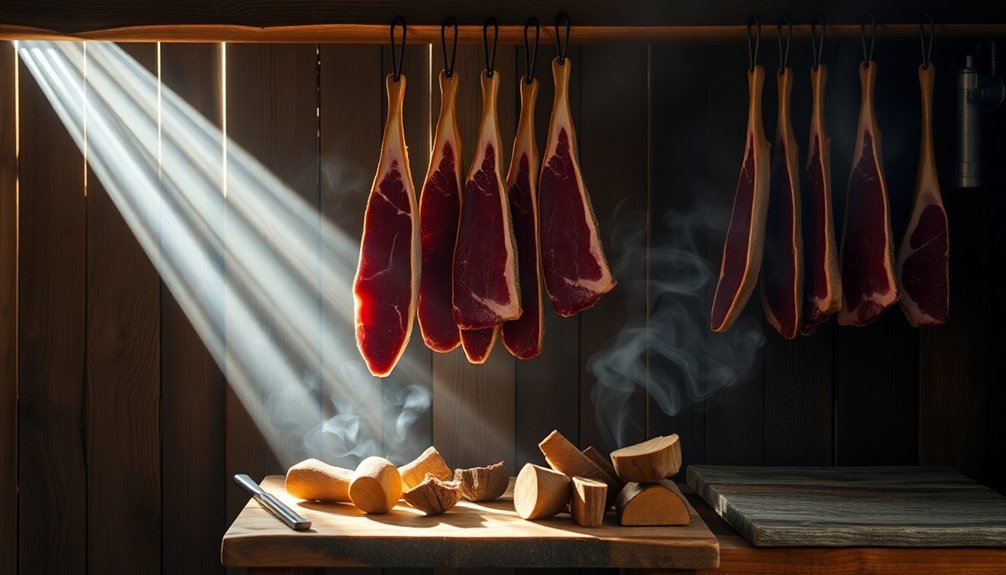
When you're preserving wild game through smoking, you'll need to decide between cold smoking (below 90°F) for longer-term preservation or hot smoking (above 165°F) for immediate consumption.
Your choice of wood will greatly impact the final flavor, with options like maple offering mild sweetness, apple providing fruity notes, and mesquite delivering a bold, earthy taste.
Consider matching your wood selection to your game meat – for example, elk pairs well with mesquite or hickory, while bear benefits from the subtler flavors of maple or apple wood.
Cold Vs Hot Smoking
Two distinct approaches dominate the art of smoke preservation: hot smoking and cold smoking. Each method serves a unique purpose in preserving your hard-earned game meat.
Hot smoking, operating between 190°F and 300°F, simultaneously cooks and flavors your meat, making it ready to eat immediately after the process. In contrast, cold smoking occurs below 90°F and requires pre-curing to guarantee food safety.
You'll need to take into account three critical factors when choosing between these methods:
- Time investment: Hot smoking takes hours, while cold smoking can extend to weeks.
- Safety requirements: Hot smoking kills bacteria through heat, while cold smoking demands proper curing first.
- Desired outcome: Hot smoking delivers robust, cooked meat, while cold smoking offers subtle flavoring.
If you're new to smoking, start with hot smoking as it's more forgiving and safer.
You'll find it perfect for larger cuts like venison roasts or wild boar ribs. When you're ready to advance, cold smoking can help you create delicate flavors in cured game meats, though you'll need to master proper curing techniques first.
Choosing Your Wood Type
Now that you've decided between hot and cold smoking, selecting the right wood for your smoke flavoring makes all the difference in your final product.
You'll find three main categories of smoking woods for venison: hardwoods, fruitwoods, and nut woods.
For a traditional, balanced smoke, oak stands as your versatile choice, offering medium to strong flavor that won't overpower your game meat.
If you're after a bolder taste, hickory delivers rich, bacon-like notes that complement venison's natural gaminess.
When you need intense flavor, mesquite provides robust smokiness, but you'll want to use it sparingly.
Looking for subtler options? Fruitwoods offer excellent alternatives.
Apple wood brings sweet, mild smoke that keeps your venison tender and moist, while cherry adds a pleasant tartness that works particularly well with game meats.
Maple strikes a perfect balance, imparting subtle sweetness that enhances venison's lean profile without overwhelming it.
You can also experiment by combining woods – try mixing oak with hickory for depth, or blend apple wood with cherry for a complex, fruity profile that'll make your smoked venison stand out.
Storage and Shelf Life
Properly storing your smoked game guarantees both safety and ideal flavor retention.
You'll need to refrigerate your smoked meat below 38°F for short-term storage, or freeze it at 0°F for longer preservation. Cut larger pieces into smaller portions before storing to assure rapid cooling and prevent bacterial growth.
For maximum protection of your hard-earned game meat, you'll want to follow these critical storage guidelines:
- Wrap your smoked meat tightly in airtight containers or vacuum-sealed bags to prevent moisture and contamination.
- Label all packages with the smoking date and type of meat to track freshness.
- Store different types of smoked meats separately to prevent flavor transfer.
Seasonal Smoking Considerations

Mastering seasonal smoking requires adapting your techniques to nature's changing conditions. As a hunter, you'll need to adjust your smoking methods based on weather patterns, wood availability, and meat characteristics throughout the year.
| Season | Wood Selection | Temperature Control |
|---|---|---|
| Summer | Use lighter woods like apple or cherry | Monitor closely to prevent overheating |
| Fall | Mix hardwoods as availability peaks | Moderate vent adjustments needed |
| Winter | Rely on denser woods for longer burns | Increase fuel to maintain temperature |
Your smoking success depends on understanding how seasonal factors affect your process. In summer, you'll need to manage higher ambient temperatures and consider using a water pan to maintain proper humidity. During fall, take advantage of prime hunting season by selecting woods that complement your game meats. Winter smoking requires extra attention to temperature control and wind protection, but the colder air can help with smoke penetration. You'll also want to adjust your meat preparation based on seasonal variations in game animals' fat content and diet. Remember to check local air quality conditions, especially during wildfire seasons, and guarantee proper ventilation regardless of the time of year.
Building Your First Smoker
With your seasonal smoking knowledge in place, let's focus on creating your own smoking setup. For hunters looking to build their first smoker, you'll want to start with high-quality materials that can withstand intense heat. A 250-gallon propane tank makes an excellent cooking chamber, while the firebox requires at least 3/16" steel to prevent warping and maintain effectiveness.
When designing your smoker, focus on these critical elements for peak performance:
- Heat flow optimization between the cooking chamber and firebox
- Proper smoke circulation through well-designed collection systems
- Strategic ventilation placement for temperature control
If you're new to smoking, consider starting with a charcoal smoker before building your own. It's an excellent way to learn temperature control and smoke management fundamentals. The Weber Smokey Mountain is particularly good for beginners, offering quality construction at a reasonable price.
Once you're ready to build, verify you have the right tools, including step drill bits and cutting wheels. Don't forget to include essential accessories like spring-assisted hinges and vent kits for better functionality.
Start with a thorough burn-off to eliminate any manufacturing residues before your first smoke.
Common Smoking Mistakes to Avoid
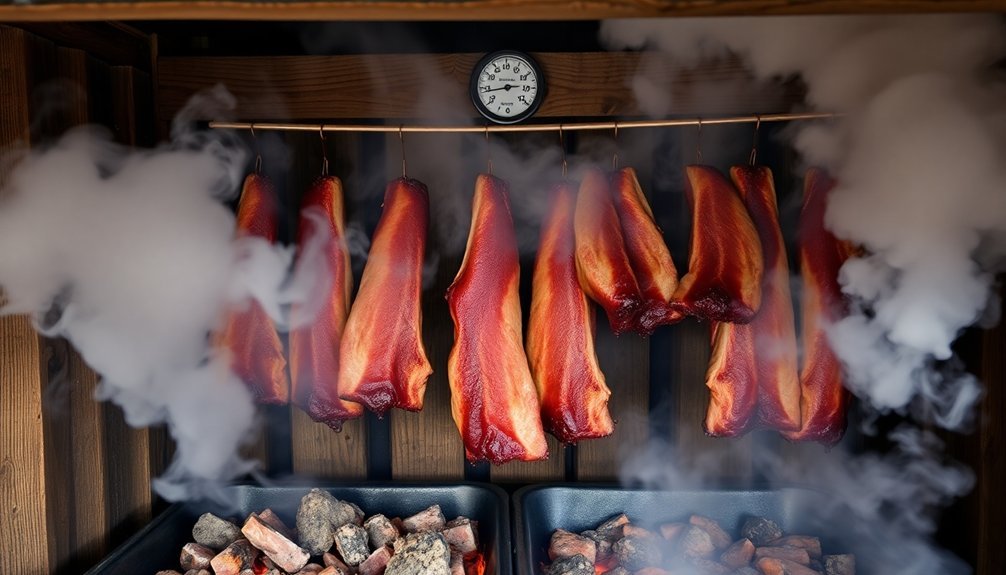
Successful smoking requires avoiding several critical pitfalls that can ruin your meat and waste valuable time. You'll need to properly prepare your smoker and meat at least an hour before you start, ensuring both reach appropriate temperatures. Don't rush this process – cold meat in a cold smoker will lead to uneven cooking and temperature control issues.
| Mistake Category | How to Avoid |
|---|---|
| Fuel Selection | Use lump charcoal instead of briquettes; choose dry hardwoods like oak or hickory |
| Smoke Quality | Maintain thin blue smoke; avoid thick white smoke that creates bitter taste |
| Temperature Control | Monitor regularly; don't open lid unnecessarily; let meat rest after cooking |
| Wood Management | Start with small amounts; avoid sappy woods like pine or cedar |
When smoking game meat, you'll want to maintain proper airflow and monitor smoke color carefully. Too much wood early on will create bitter flavors, while poor smoke movement can lead to creosote buildup. Don't succumb to the temptation of frequently checking your meat – each lid opening extends cooking time and reduces flavor development. Remember to let your meat rest afterward, allowing moisture to redistribute throughout the cuts for ideal tenderness.
Best Cuts for Smoking
Now that you know what mistakes to avoid, selecting the right cuts of meat will guarantee your smoking efforts pay off. When smoking game meat, you'll want to follow similar principles that work for store-bought cuts. For wild poultry, treat it like chicken – whole birds and dark meat pieces work best due to their fat content and ability to retain moisture.
For larger game that's similar to beef or pork, focus on cuts that mirror these proven winners:
- Shoulder and neck cuts – These tough, well-worked muscles contain plenty of connective tissue that breaks down beautifully during low-and-slow smoking.
- Back straps and loins – While leaner, they'll smoke well if you monitor temperature closely and don't overcook.
- Hindquarter cuts – These work especially well when treated like beef top round or tri-tip, smoked at lower temperatures.
You'll want to smoke your game meat at 225°F, using woods like oak, hickory, or cherry for the best results.
Remember to choose cuts with good marbling when possible, and don't trim away too much fat – it's essential for keeping the meat moist during the smoking process.
For tougher cuts, plan on longer smoking sessions to break down connective tissue properly.
Pairing Woods With Game Meats

Choosing the right smoking wood dramatically influences your game meat's final flavor profile.
When you're smoking larger game like deer or elk, you'll want to reach for hickory or oak. These woods deliver robust, smoky flavors that complement the meat's natural taste, with hickory adding a bacon-like quality and oak providing a balanced medium smoke.
For smaller game and birds, you'll find fruitwoods are your best allies. Applewood works wonders with duck and turkey, while cherry wood perfectly complements grouse and other game birds. These woods offer subtle sweetness that won't overpower your meat's natural flavors.
If you're looking to experiment, try mesquite or maple. Use mesquite sparingly as it's intensely earthy, while maple adds a mild sweetness that pairs beautifully with bear and deer meat. You can even combine different woods to create complex flavor profiles that enhance your game's taste.
Remember to always use fresh, untreated wood to avoid contaminating your meat.
For long smoking sessions, opt for logs or chunks; for shorter sessions, chips will do just fine. If possible, consider using wood from trees native to your hunting area for an authentic, harmonious flavor.
Frequently Asked Questions
Can Smoked Game Meat Be Safely Consumed During Pregnancy?
You can safely eat smoked game meat while pregnant if it's fully cooked to 145°F, wasn't killed with lead shot, and has been hot-smoked. Always use a meat thermometer to verify proper temperature.
How Does Altitude Affect Smoking Times and Temperatures?
You'll need to increase cooking times by 5-10% at higher altitudes due to lower air pressure. You must maintain higher heat settings and add more fuel, as temperatures drop faster and oxygen levels decrease.
Is It Possible to Over-Smoke Meat to the Point of Toxicity?
Yes, you can make meat toxic by over-smoking. If you create too much creosote or let PAHs and HCAs build up excessively, your meat can become harmful. Watch for bitter tastes and black char.
Can I Use My Indoor Fireplace for Smoking Game Meat?
You shouldn't smoke game meat in your indoor fireplace. It's unsafe due to fire hazards, poor ventilation, and carbon monoxide risks. Use a proper outdoor smoker instead for better control and safer results.
Does Smoking Game Meat Eliminate the Risk of Parasites and Foodborne Diseases?
No, smoking alone won't protect you from parasites and foodborne diseases. You'll need to cook your game meat thoroughly to 165°F and combine smoking with proper handling and preservation methods for safety.
In Summary
You'll find smoke preservation isn't just an ancient survival skill – it's a modern necessity for any serious hunter. By mastering this technique, you're preserving your harvest, creating delicious meals, and connecting with age-old traditions. Whether you're smoking venison, waterfowl, or small game, you're joining generations of hunters who've relied on this method. Start smoking your game today, and you'll wonder why you didn't begin sooner.
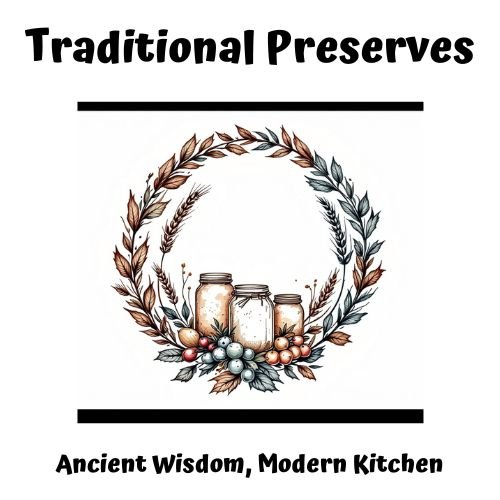
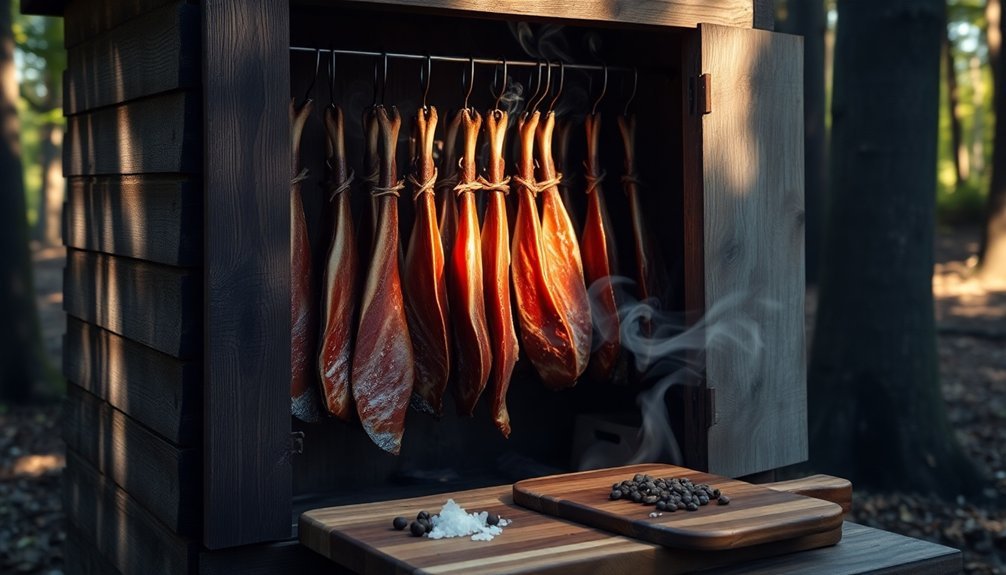
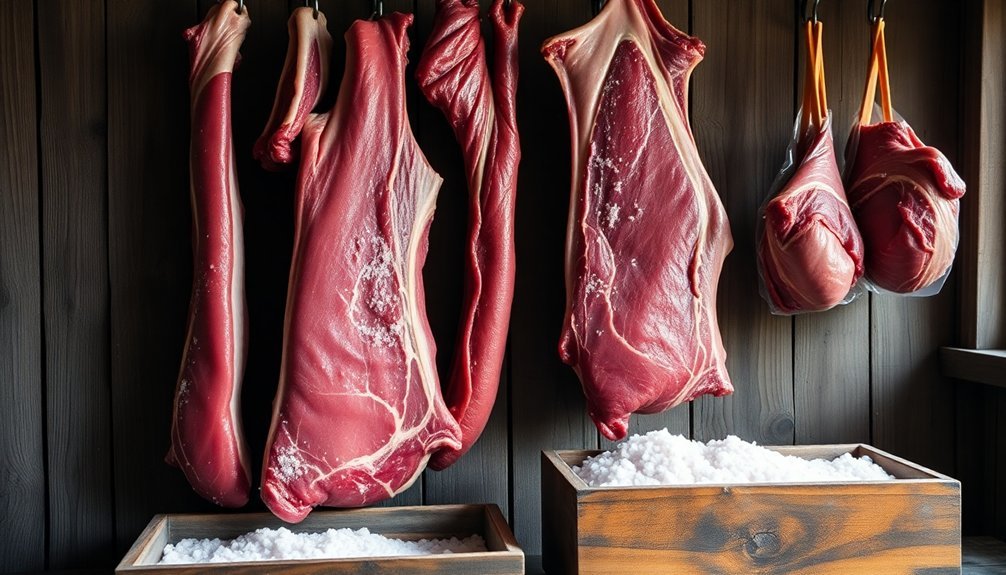
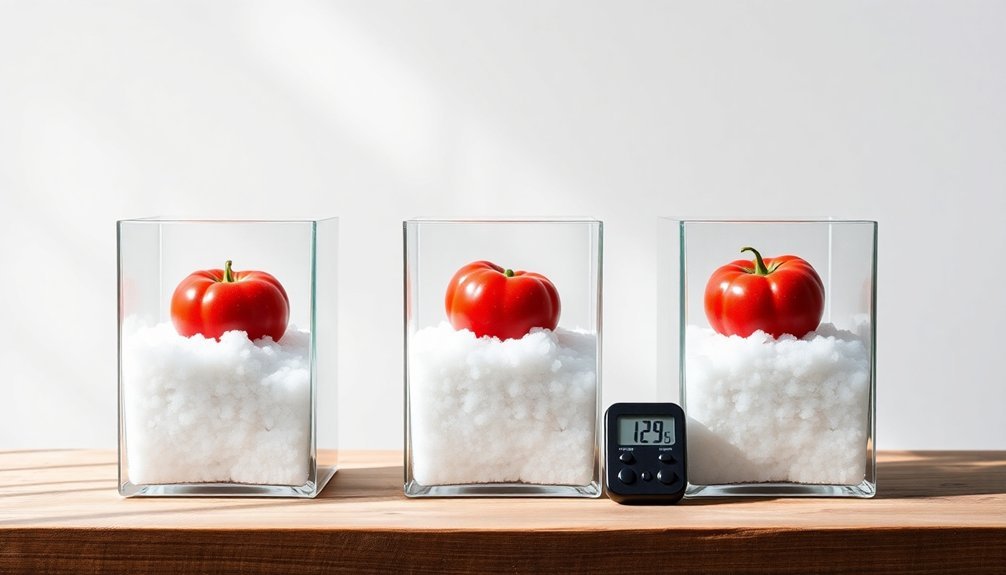
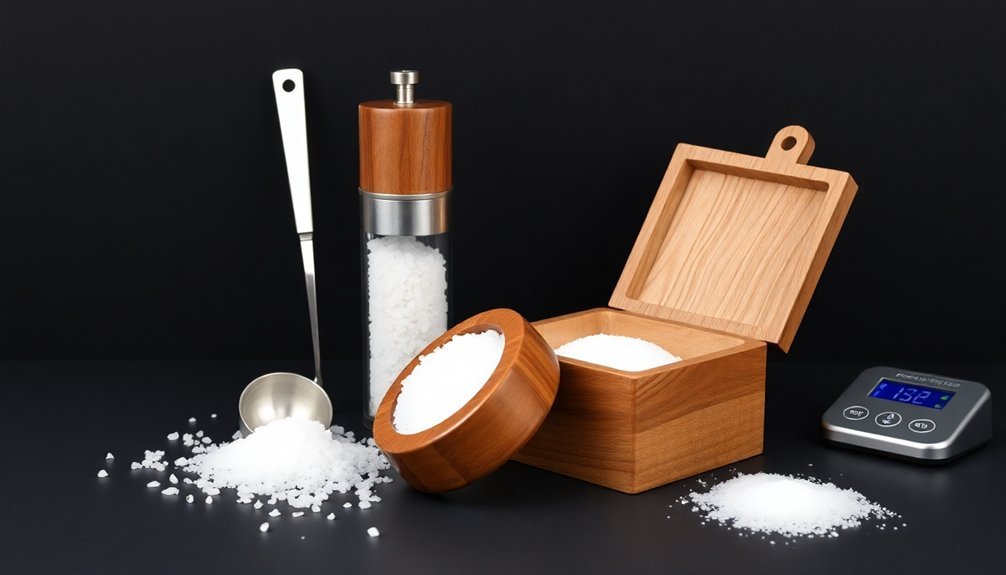
Leave a Reply